In the competitive subcompact segment, the Hyundai i20 and Kia Stonic stand out as two noteworthy options for buyers seeking style, performance, and practicality. Both vehicles offer a blend of modern design and innovative technologies, making them appealing to a wide range of consumers. This article will delve into a detailed comparison of the Hyundai i20 and Kia Stonic, covering their technical specifications, performance, and features.
Hyundai i20 vs Kia Stonic – Which car suits you better?
Two cars, one duel: Hyundai i20 meets Kia Stonic.
Which one wins in performance, efficiency and value for money? Find out now!
Design and Dimensions
The Hyundai i20 presents a sleek hatchback silhouette, measuring 4075 mm in length, 1775 mm in width, and standing at a height of 1455 mm. This makes it a compact option that is easy to maneuver in urban settings while providing ample interior space for passengers and cargo.
On the other hand, the Kia Stonic, classified as a subcompact SUV, boasts a slightly larger footprint with a length of 4140 mm, a width of 1760 mm, and a height of 1505 mm. Its elevated stance offers a commanding view of the road, enhancing the driving experience for those who prefer a higher driving position.
Powertrains and Performance
Both vehicles offer efficient petrol options with mild hybrid variants available. The Hyundai i20 is equipped with a choice of 1.0-liter 3-cylinder engines producing up to 100 HP, while the Kia Stonic shares a similar engine lineup, also with a maximum output of 100 HP from its 1.0-liter engines.
When it comes to acceleration, the i20 has a slight edge, achieving 0-100 km/h in approximately 11.1 seconds compared to the Stonic's 11.3 seconds. Both models are front-wheel-drive and feature manual or automatic transmissions, allowing for a flexible driving experience. The top speed of the i20 reaches up to 182 km/h, while the Stonic caps at 179 km/h.
Fuel Efficiency and Emissions
In terms of fuel efficiency, the i20 showcases impressive consumption figures, averaging between 5.1 to 5.3 L/100km depending on the engine variant. The Stonic, in comparison, ranges from 5.5 to 5.8 L/100km. Both vehicles are classified under CO2 efficiency class D, with emissions hovering around 117 to 132 g/km, making them relatively eco-friendly options in their segment.
Interior and Technology
Inside, the Hyundai i20 provides a modern and driver-centric dashboard with a spacious cabin designed for comfort. It includes features such as a touch infotainment system, smartphone connectivity options, and high-quality materials throughout.
The Kia Stonic also focuses heavily on interior comfort and technology, featuring a similar infotainment setup that enhances connectivity and usability. However, the added height of the Stonic contributes to a more spacious feel for passengers, particularly in the rear seats.
Safety Features and Innovations
Both cars are equipped with a suite of safety features, such as multiple airbags, ABS, and advanced driver-assistance systems. The Hyundai i20 comes with additional cutting-edge technologies including lane-keeping assist and adaptive cruise control, while the Kia Stonic provides an equally robust safety package aimed at ensuring peace of mind for drivers and passengers alike.
Pricing and Value
Price-wise, the Hyundai i20 starts at around €19,900 for the base model, scaling up to €27,600 for higher trims. The Kia Stonic offers a competitive starting price of €22,490, with the range going up to €29,680. Both vehicles deliver exceptional value for their price points, given the specifications and features included.
Conclusion
In conclusion, the choice between the Hyundai i20 and the Kia Stonic boils down to personal preference and lifestyle needs. The i20 appeals to those prioritizing a compact and agile hatchback, while the Stonic caters to buyers looking for the added height and versatility of an SUV. Ultimately, both models are commendable choices within their segment, embodying the quality and innovation that Hyundai and Kia are known for.
Here’s where it gets real: The technical differences in detail
Costs and Efficiency:
Price and efficiency are key factors when choosing a car – and this is often where the real differences emerge.
Hyundai i20 has a to a small extent advantage in terms of price – it starts at 17400 £, while the Kia Stonic costs 20100 £. That’s a price difference of around 2734 £.
Fuel consumption also shows a difference: Hyundai i20 manages with 5.20 L and is therefore slight more efficient than the Kia Stonic with 5.60 L. The difference is about 0.40 L per 100 km.
Engine and Performance:
Power, torque and acceleration are the classic benchmarks for car enthusiasts – and here, some clear differences start to show.
When it comes to engine power, the Kia Stonic has a slightly edge – offering 115 HP compared to 100 HP. That’s roughly 15 HP more horsepower.
In acceleration from 0 to 100 km/h, the Kia Stonic is slight quicker – completing the sprint in 10.70 s, while the Hyundai i20 takes 11.10 s. That’s about 0.40 s faster.
In terms of top speed, the Hyundai i20 performs barely noticeable better – reaching 183 km/h, while the Kia Stonic tops out at 182 km/h. The difference is around 1 km/h.
Both models offer the same torque – 200 Nm.
Space and Everyday Use:
Cabin size, boot volume and payload all play a role in everyday practicality. Here, comfort and flexibility make the difference.
Both vehicles offer seating for 5 people.
In curb weight, Hyundai i20 is to a small extent lighter – 1088 kg compared to 1205 kg. The difference is around 117 kg.
Boot capacity is identical – both offer 352 L of storage.
In maximum load capacity, the Hyundai i20 performs minimal better – up to 1165 L, which is about 10 L more than the Kia Stonic.
When it comes to payload, Hyundai i20 slight takes the win – 472 kg compared to 445 kg. That’s a difference of about 27 kg.
Who comes out on top?
Overall, the Hyundai i20 shows itself to be performs better in key areas and secures the title of DriveDuel Champion.
It convinces with the more balanced overall package and proves to be the more versatile choice for everyday use.
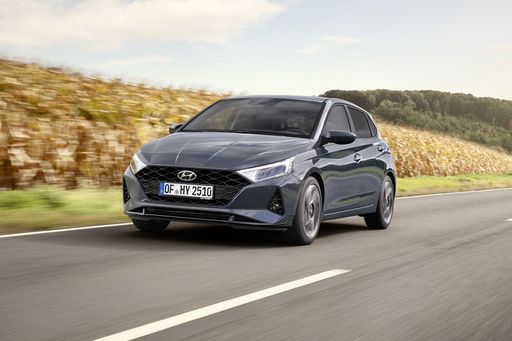 @ Hyundai Motor Company
@ Hyundai Motor Company
Hyundai i20
Hyundai i20
The Hyundai i20 is a cheeky small car that mixes smart styling with sensible practicality, feeling more polished and roomy than you might expect for the money. It’s an easy car to live with, offering engaging handling, a comfy cabin and useful equipment that make daily commutes and weekend errands notably less dull.
details @ Hyundai Motor Company
@ Hyundai Motor Company
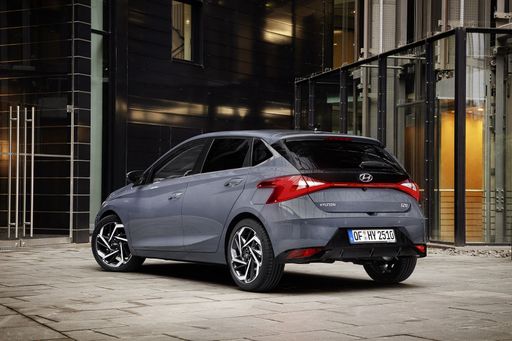 @ Hyundai Motor Company
@ Hyundai Motor Company
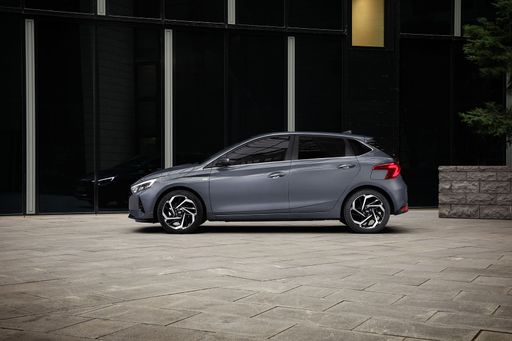 @ Hyundai Motor Company
@ Hyundai Motor Company
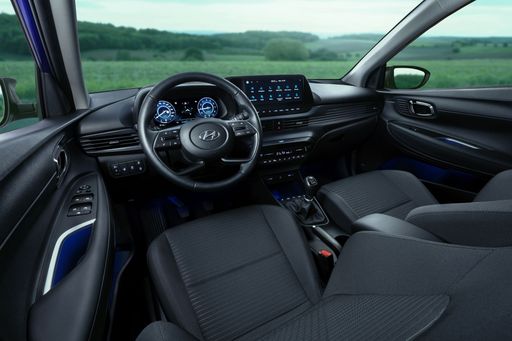 @ Hyundai Motor Company
@ Hyundai Motor Company
 @ Hyundai Motor Company
@ Hyundai Motor Company
Kia Stonic
The Kia Stonic is a sprightly compact crossover that mixes city-friendly agility with a cheeky, modern design — perfect for buyers who want style without sacrificing sense. Inside it serves up clever practicality and a bright, well-equipped cabin, making everyday driving feel a bit more fun than it has any right to be.
details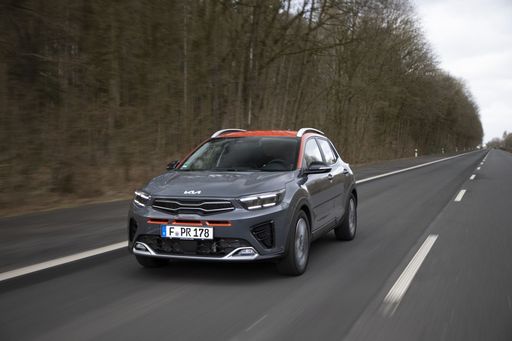 @ Kia Corporation
@ Kia Corporation
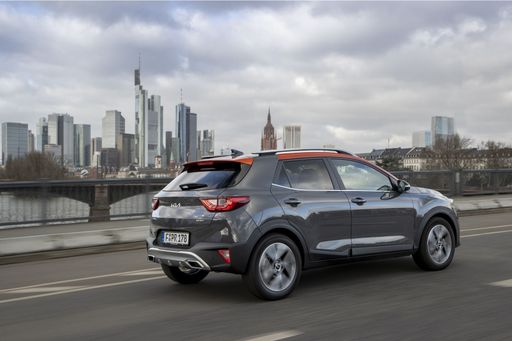 @ Kia Corporation
@ Kia Corporation
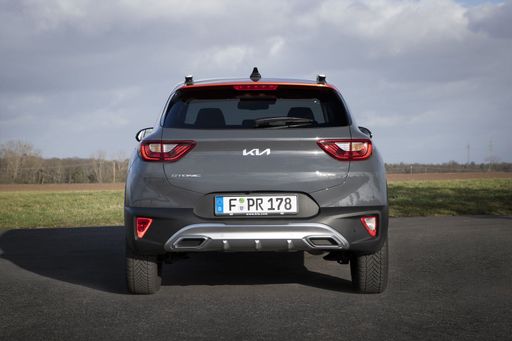 @ Kia Corporation
@ Kia Corporation
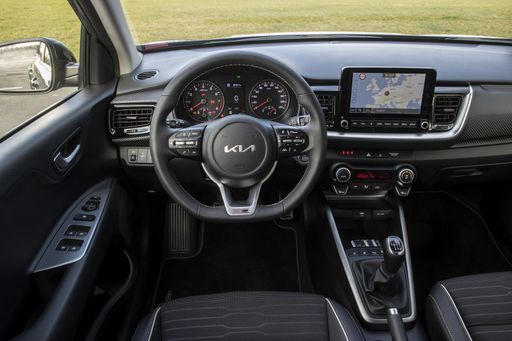 @ Kia Corporation
@ Kia Corporation
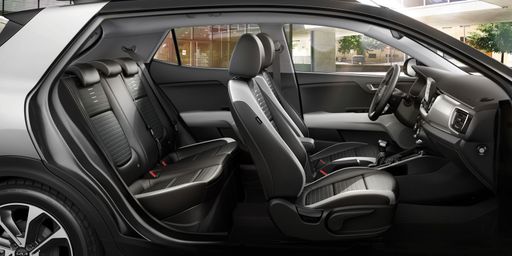 @ Kia Corporation
@ Kia Corporation
 @ Hyundai Motor Company
@ Hyundai Motor Company
|
 @ Kia Corporation
@ Kia Corporation
|
|
|
|
Costs and Consumption |
|
|---|---|
|
Price
17400 - 24000 £
|
Price
20100 - 26600 £
|
|
Consumption L/100km
5.2 - 5.3 L
|
Consumption L/100km
5.6 - 5.9 L
|
|
Consumption kWh/100km
-
|
Consumption kWh/100km
-
|
|
Electric Range
-
|
Electric Range
-
|
|
Battery Capacity
-
|
Battery Capacity
-
|
|
co2
119 - 121 g/km
|
co2
127 - 133 g/km
|
|
Fuel tank capacity
40 L
|
Fuel tank capacity
45 L
|
Dimensions and Body |
|
|---|---|
|
Body Type
Hatchback
|
Body Type
SUV
|
|
Seats
5
|
Seats
5
|
|
Doors
5
|
Doors
5
|
|
Curb weight
1088 - 1190 kg
|
Curb weight
1205 - 1270 kg
|
|
Trunk capacity
352 L
|
Trunk capacity
352 L
|
|
Length
4065 - 4075 mm
|
Length
4165 mm
|
|
Width
1775 mm
|
Width
1760 mm
|
|
Height
1450 - 1455 mm
|
Height
1520 mm
|
|
Max trunk capacity
1165 L
|
Max trunk capacity
1155 L
|
|
Payload
450 - 472 kg
|
Payload
440 - 445 kg
|
Engine and Performance |
|
|---|---|
|
Engine Type
Petrol
|
Engine Type
Petrol, Petrol MHEV
|
|
Transmission
Automatic, Manuel
|
Transmission
Manuel, Automatic
|
|
Transmission Detail
Dual-Clutch Automatic, Manual Gearbox
|
Transmission Detail
Manual Gearbox, Dual-Clutch Automatic
|
|
Drive Type
Front-Wheel Drive
|
Drive Type
Front-Wheel Drive
|
|
Power HP
79 - 100 HP
|
Power HP
100 - 115 HP
|
|
Acceleration 0-100km/h
11.1 - 13.7 s
|
Acceleration 0-100km/h
10.7 - 12.1 s
|
|
Max Speed
166 - 183 km/h
|
Max Speed
179 - 182 km/h
|
|
Torque
113 - 200 Nm
|
Torque
172 - 200 Nm
|
|
Number of Cylinders
3 - 4
|
Number of Cylinders
3
|
|
Power kW
58 - 74 kW
|
Power kW
74 - 85 kW
|
|
Engine capacity
998 - 1197 cm3
|
Engine capacity
998 cm3
|
General |
|
|---|---|
|
Model Year
2024
|
Model Year
2025
|
|
CO2 Efficiency Class
D
|
CO2 Efficiency Class
D
|
|
Brand
Hyundai
|
Brand
Kia
|
What drivetrain options does the Hyundai i20 have?
The Hyundai i20 is offered with Front-Wheel Drive.
The prices and data displayed are estimates based on German list prices and may vary by country. This information is not legally binding.
